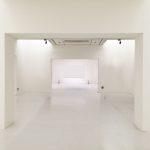Simplicity is the ultimate sophistication.
We write a lot about minimalism in our essays; we believe it is a key ingredient for the green way of living. The first R—reduce—is actually an act of minimizing, it is the minimalism of waste. But what exactly is minimalism all about?
When I first read about minimalism I thought of it more like an interior design fad. Neat pictures showing nearly empty spaces and clean rooms. Simple colors and few furniture. I was always fascinated by those pictures though, and I used to consume them for a while, attracted by their simple beauty. You can check some minimalist pictures to get an idea of what I’m talking about. Unaware of any deeper meaning of that attraction and only seeking for easy entertainment, I would have simply moved on, without any change. It was only much later when I discovered that interior design is only one of numerous facets of minimalism. I realized that I was not attracted by the interior design aspect, but by the minimalism of it—the absence of excess and clutter.
Minimalism is a philosophy that is simply and most elegantly summarized with the following contradictory proverb.
Less Is More.
By removing excess we make room for more. This applies to every facet of it, ranging from architecture and art to material possessions and thoughts. Less is more—a powerful mantra that can change lives. Anything can be minimized, and this is especially great for undesirable things or circumstances.
I started to incorporate that philosophy into my live, starting at my material possessions. I wanted to stop only admiring minimalist interior designs but actually make my own home one of them. I made a list of personal belongings and took on the 100 Things Challenge. Cutting down my personal stuff had little impact on the overall excess however. I talked about minimalism with my wife and soon we started to getting rid of lots of stuff over the course of one year. We never stopped ever since.
The more the material possessions decreased, the more the minimalism started to spread to other parts of our lives. We simplified our diet and started to eat vegan for more health. We decreased distraction and appointments for more space to do what we loved. We minimized our thoughts and stress and found more awareness. We reduced luxury and fashion and gained more gratitude. We cut on sanitary products, cleansing agents and disposable goods to learn more self-sustainability. Whatever we minimized made space for something new, something that was more worthwhile and more joyful.
Minimalism a is very simple philosophy. The difficulty of it does not lie in the concept itself or finding ways how to getting rid of stuff. The true challenge lies therein as to determine which aspects require minimization, or better yet, determining the essentials and minimizing all the rest. For us, our material possessions were a good starting point, since they are a very obvious manifestation of excess. Other, less apparent aspects will become more clear once the minimalist mindset is sparked. The actual action of letting go is another obstacle to overcome, repeatedly. The recurrence nature of this process allows for practice and so each time that action becomes easier.
The more we let go, the more we learn to be grateful and enjoy less. The simpler our lives become, the happier we get in turn. Whatever it is that we minimize, something will come and take its place, but we are in control of what that replacement is, and that is the key.
Be aware though, even minimalism can be excessive. By over-minimizing, by minimizing more than what makes us happy, more than what we need. Deprivation essentially. We crossed that line many times, and simply took a step backwards if necessary. Sometimes only by depriving yourself you realize whether you truly need something or not. Keeping the essentials, and letting go of the non-essentials, that is the true art of minimalism.
Ultimately minimalism is much more than just an interior design fad. It is a fundamental philosophy, a great tool that helps us to reduce excess and make room for what truly matters.
References
- The saying was popularized by the architecture Ludwig Mies van der Rohe, a proponent of minimalist architecture.



